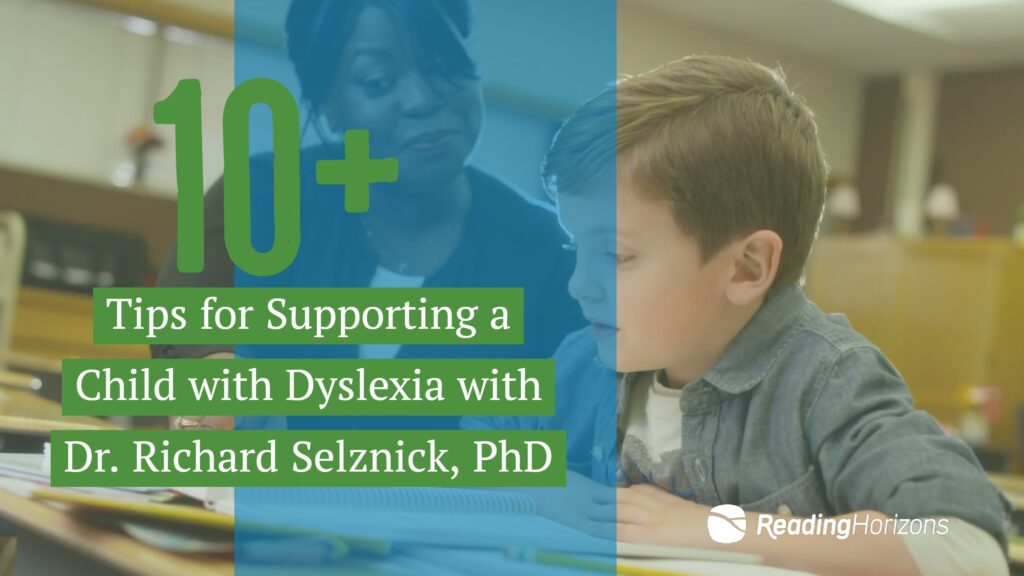
In October 2017, we hosted an online dyslexia summit which included three unique presentations ranging from an expert panel to expert advice on assistive technology to help students who have dyslexia. The third and final presentation of the day was made by Dr. Richard Selznick, who is a nationally certified school psychologist, an assistant professor of pediatrics, a school consultant, and a Wilson-certified reading instructor. He is also the author of three books: “The Shut-Down Learner: Helping Your Academically Discouraged Child,” “School Struggles: A Guide to Your Shut-Down Learner’s Success,” and “Dyslexia Screening: Essential Concepts for Schools & Parents.”
While Dr. Selznick does give tips and guidelines for helping children with dyslexia, he also stresses that each child is different and that there should be a customized approach to helping each student with dyslexia succeed. During his presentation, he lists 10+ essentials for supporting children with dyslexia. These essentials are, as follows:
- Essential #1 (For Parents): Turn Down the Heat. This essential is all about not yelling as much or being as hard on your child about homework or other schoolwork.
- Essential #2 (For Parents): The Goldilocks Factor. Keep checking on your “POQ,” or Parent Over involvement Quotient. For any task, ask, “What’s the zone of competence?”
- Essential #3 (Parents and Teachers): Know the Stages. Stages provide a roadmap and guide next-step thinking. The Stages of Reading Development are: prereading, initial reading or decoding, confirmation, fluency, and ungluing of print, learning the new and multiple viewpoints.
- Essential #4: Understand That the Battery Dims Over Time – It’s a Long Race. Don’t be discouraged and deflated by degrees. Find ways to champion the child.
- Essential #5 (Parents and Teachers): Make Things Visual. Children with dyslexia are very visual learners, and when you make your thinking/teaching visual, you will help them immensely. Encourage them to retell stories or what they have read in visual forms.
- Essential #6: Watch Over-Concern about Fairness. Classroom Essential: Remember, these kids are on a pretty steep incline.
- Essential #7: Open-Ended Writing Is Dyslexia “Kryptonite.” Classroom: Writing is arguably the biggest problem for students with dyslexia. Focus on the sentence level to achieve mastery. Use the “old school” Language Experience Approach for longer writing.
- Essential #8 (Parents and Teachers): Preview the “Big Words.” The “Big Words” in text are extreme hurdles. Children with dyslexia find them incredibly challenging.
- Essential #9 (Classroom and Home): Text-to-Speech Technology and Other assistive technologies. Train kids on the top-recommended assistive technologies.
- Essential #10 (School and Home): Be Mindful of Potentially Embarrassing and/or Shameful Situations. Always be mindful of the potential for shame and embarrassment.
- Essential of All Essentials: It’s the quality of the relationship that matters above all.
Again, these are all suggestions to help students with dyslexia, and each student is an individual and each case should be treated differently.
